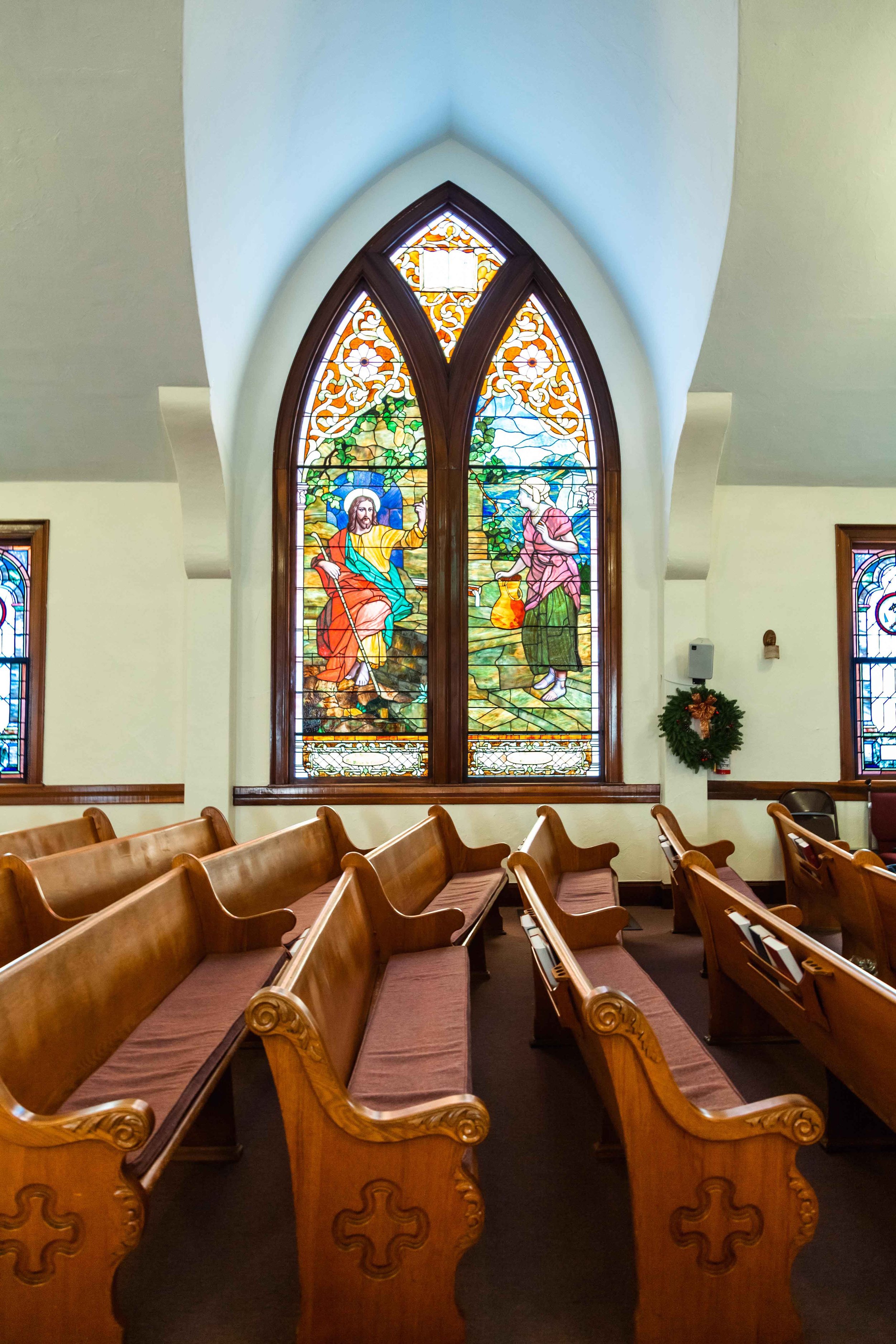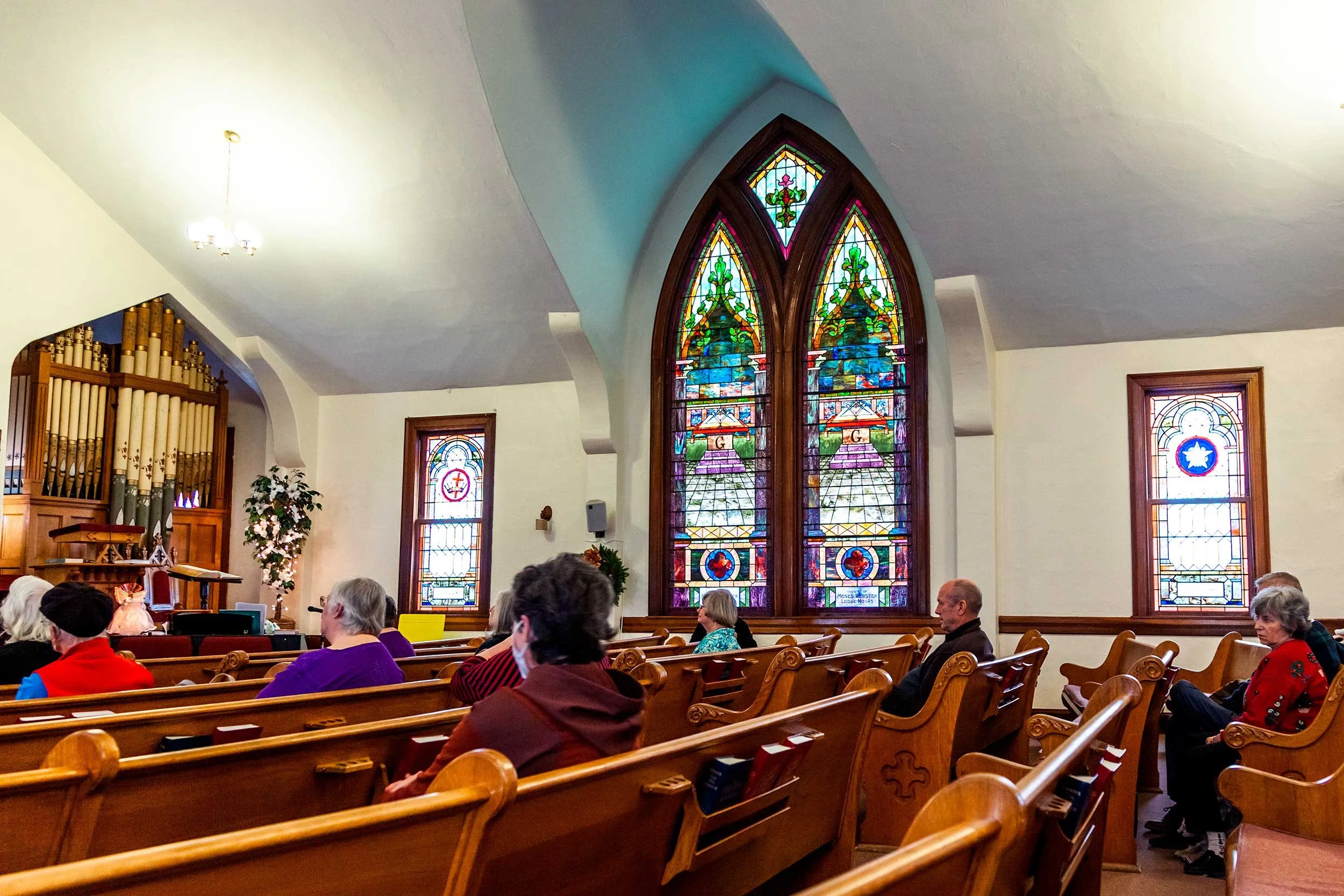
Union Church of Vinalhaven History
"In the spring of 1860 a number of citizens of Vinalhaven formed themselves into a society whose purpose was to build a house of Worship. Reuben Carver, Moses Webster and Timothy Lane were appointed a building committee. They purchased the lot upon which the present building stands and erected a church building at a cost of $2,850. The cost was met by selling pews. The building was dedicated to God October 10, 1860, as a Union Meeting House.
Hitherto services had been held in school houses and private residences. A Sunday School had been maintained under the leadership of William
Barter and later of John Carver. The M.E. Conference had stationed Rev. Abraham Plummer on the Island and he was a moving spirit during the agitation for a building. The first Trustees of the property were David Vinal, Ezekiel Burgess, Elisha Carver, Chaney Noyes and Nathaniel Ames.
In 1863 with the coming of Rev. Wm. H. Littlefield, a Union Society was formed and in1864 a Free Will Baptist Church, with the following charter members: Rev. Wm. H. Littlefield, James Ginn, John Orne, W.B. Kittredge, S.G. Webster, G.W. Bradford, A.J. Young, Mary S. Littlefield, Sarah G. Barter and Emily Kittredge."
—From Telling the Story: A History of the Union Church of Vinalhaven 1860-2000 Rev. Harry P. Shirley
THE BUILDING
The Union Church of Vinalhaven is a historic church on East Main Street in the center of Vinalhaven, Maine. Built by Otto Nelson in 1899, it is a high quality example of Shingle style architecture, designed by Maine's best-known architect of the turn of the 20th century and one of its major promoters, John Calvin Stevens. Stevens was a major promoter of the Shingle style, and this church is an excellent example of the style. It was built to replace an earlier structure, built in 1860 when Vinalhaven was a major granite quarrying and shipping center. It was listed on the National Register of Historic Places in 1984.
Designed in the Shingle Style, this church is entirely sheathed with dark brown wood shingles. The main section of the building is rectangular with a steeply pitched gable roof. On one side is a massive bell tower with a shingled entrance porch. Gothic style influences are evident in the lancet arched windows. The round windows and over-hang of the gable end, on the other hand, suggest the Colonial Revival style. This trim is painted white, which provides a sharp contrast to the shingle siding.
WINDOW Restoration
When you enter the sanctuary at the Union Church the first things that you see are the beautiful stained glass windows along both side walls leading up to the alter. There is one in particular that holds special significance for the members and friends of the church. Placed in the middle on the front side of the church, this window depicts Jesus meeting a woman at the well. It is of special interest to the Church because the theme of the window and the story depicted are of inclusion. It would not have been appropriate for Jesus to go to the well during the day and talk to a woman from Samaria. It also would not have been appropriate for him to talk with a woman of such ill repute. But Jesus doesn't care. He breaks from all tradition and reaches out in kindness and love to the woman.
It doesn't matter how old you are, where you are from, what your background or sexual orientation are. The Union Church opens its arms to everyone who comes through its doors. This why, when the window was in need of major repair, members of the church and the community raised over $50,000 over a three-year period to have the window sent to Massachusetts to be completely refurbished.





